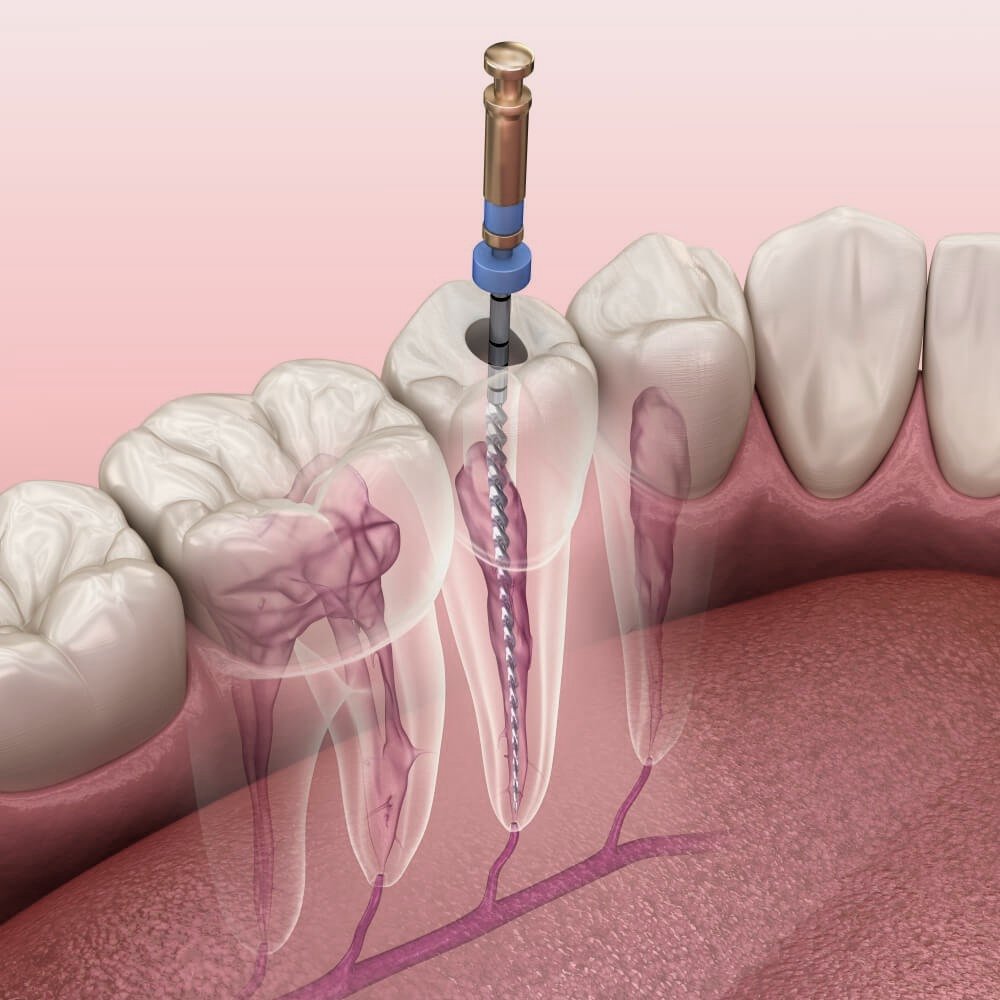Root Canal
The tooth has a tough, white enamel layer on top and a thicker dentine layer beneath it, both shielding the inner soft part called the pulp. This pulp has nerves and blood vessels, stretching from the crown to the roots.
Root canal treatment removes infected or inflamed pulp, often caused by deep decay, extensive restoration, tooth cracks, enamel wear, or severe gum disease. Warning signs include pain, sensitivity, tooth discoloration, gum swelling, or an odd taste. Sometimes, there are no symptoms. If untreated, pulp issues can lead to pain, swelling, and bone loss.
FAQs
-
Root canal treatment saves teeth that would otherwise have been extracted.
After root canal treatment the tooth is pulp-less i.e. it has no vital tissues within. However, there are vital tissues surrounding the root e.g. the gum, periodontal membrane and supporting bone. A root canal treated tooth can function normally and can be maintained with routine dental care and oral hygiene measures.
-
Root canal treatment procedures are relatively comfortable and often painless as the tooth is anaesthetised during treatment. After treatment, the tooth may be sensitive or tender for a few days due to inflammation of the surrounding tissues. This discomfort can be relieved by taking mild analgesics or painkillers available over the counter at the pharmacy. However, if the pain persists and is severe, or a swelling occurs, you should contact your dentist.
-
Removal of the infected or inflamed pulp is the first step in saving the tooth. Under local anaesthetic an opening is made in the crown of the tooth to get access to the infected or inflamed pulp within.
Using small, specially designed hand or rotary files, the root canals are cleaned and shaped to a form that can be sealed. Debris within the canals is removed by flushing with an anti-bacterial solution.
The canals are finally filled or sealed with an inert material called gutta-percha. The tooth should be restored to full shape and function by either a permanent filling or a crown, depending on how much of the tooth is left. This should be done as soon as possible as there could be a risk of tooth fracture due to biting forces.
All root canal treatment procedures are performed by isolating the tooth with a rubber dam to provide a clean and saliva-free environment. Root canal treatment may be done in single or multiple visits depending on the complexity of the tooth. In between treatment appointments, medicaments may be placed within the canals and the tooth is covered with a temporary filling.
Often, X-rays are taken to determine the length of the root and to monitor the various treatment stages.
-
Try not to bite or chew on the treated tooth until it's fully restored with a filling or crown. Excessive pressure can cause cracks or fractures. Timely restoration is crucial, and most treated teeth last as long as natural ones with proper care.
Maintain good oral hygiene with regular brushing and flossing, as root-filled teeth can still get cavities. It's also vital to have your treated tooth checked by your dentist regularly.
